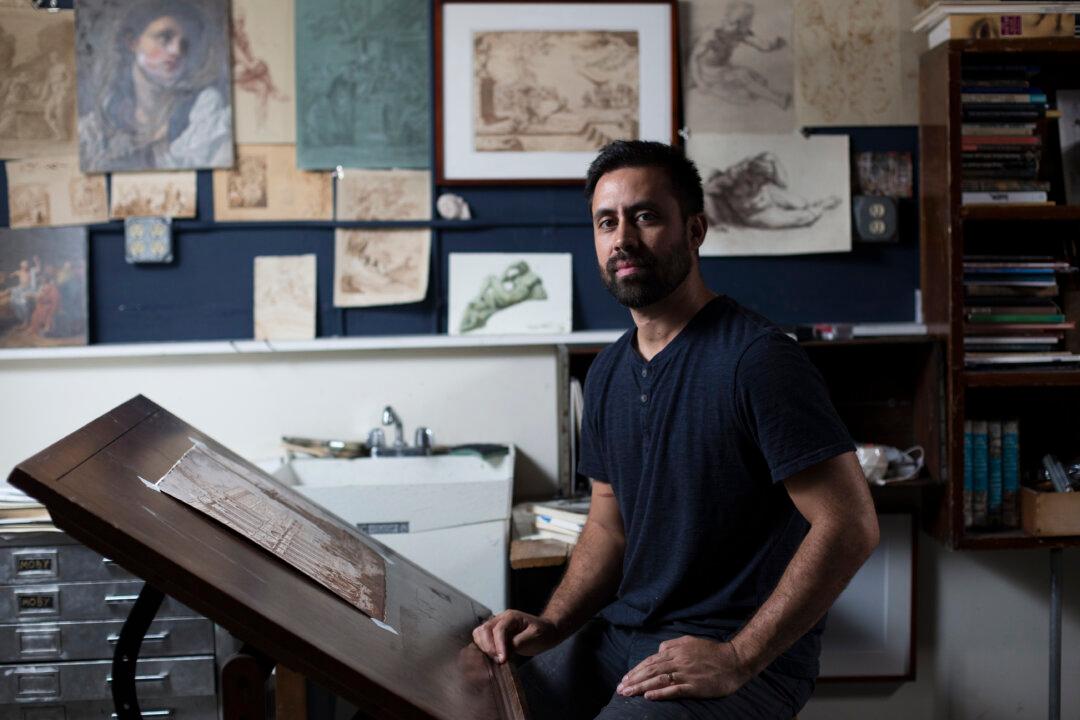NEW YORK—Civilizations rise and fall over millennia, leaving ruins. Then nature takes over. Vegetation grows between scattered pieces, remnants of forgotten cultures. It’s a theme draftsman and painter Anthony Baus finds appealing. At first glance his pen and ink wash drawings conjure images of ancient Greece or Rome, or something like a Tiepolo painting bursting with grand gestures and drama. But then looking through his work, you notice a Manhattan building of the Gilded Age, or the Bethesda Terrace in Central Park, or a bicycle in a scene that seems to be of a time before bicycles were invented. There’s an old feel to his work, but it is not necessarily nostalgic.
“You can ask yourself: What does a drawing of today look like?” Baus said in his studio at the Grand Central Atelier (GCA), where he teaches perspective and design. “I don’t want to do something that has already been done, or that is specific to a certain time period, but the existing language of art is important for me to explore.”






